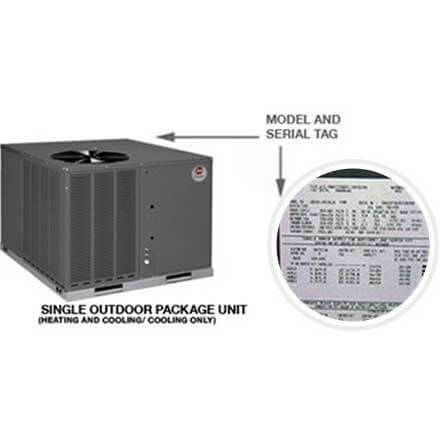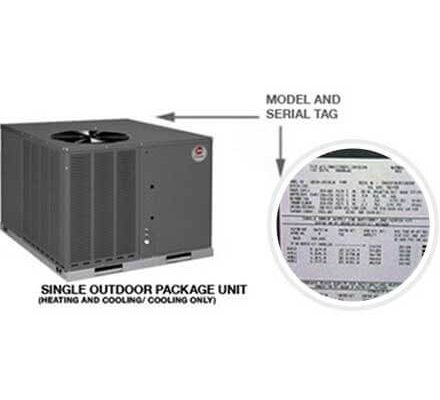
Honestly, it’s a bit like buying a gym membership but never actually signing the contract. You might assume you’re covered because you paid, but some fine print might say otherwise. Let me explain how warranty registration works with Rheem HVAC systems and what that means for your claims. We’ll break it down slowly, so by the end, you won’t have to second-guess if you missed a step when that chilly winter day hits.
Understanding Rheem’s Warranty Basics
Rheem, a well-known name in heating and cooling, offers warranties to protect customers from unexpected repair costs. These warranties generally cover parts and sometimes labor, depending on the system purchased. But here’s the thing: warranties are like promises, and those promises come with some conditions.
For Rheem HVAC systems, the warranty typically starts from the purchase date of the system. However, that start date can sometimes be tied to the warranty registration. The registration process is Rheem’s way of confirming when and where the system was installed. It’s like giving them a heads-up: “Hey, this unit’s with me now!” This helps make sure the claim is valid later, and it can also speed up service by verifying details quickly.
If you don’t register, it doesn’t necessarily mean your warranty is void, but it can complicate things. Rheem might default to the shipment date from the factory, which might be different from your actual installation date. This can affect your coverage period, especially if the system sat on a warehouse shelf for months. So registration can be a small step that protects your warranty window.
Is Warranty Registration Mandatory to File a Claim?
Here’s where a lot of folks get confused. The simple answer is: usually, no—warranty registration is not strictly required to make a claim on Rheem HVAC systems. You can still file a claim without registering, but it depends on how you bought the system and what paperwork you have.
When you register your system’s warranty, Rheem logs the installation date officially. If you haven’t registered, the company may rely on the original invoice or shipping date to determine your warranty coverage. This can sometimes lead to disputes or delays because the warranty clock might seem shorter or expired based on that date.
Think of it this way: if you don’t register, it’s like not syncing your new smartphone—you can still use it, but some services might not activate smoothly. If you hold onto your sales receipt with the purchase and installation date clearly shown, you usually have enough proof to make a claim without registering. But if that paperwork is missing or unclear, you could hit a snag.
When Registration Becomes Important
There are specific situations where warranty registration becomes key. For example, if you bought your Rheem system through a third-party, or if you’re trying to extend a standard warranty with additional coverage, registration usually matters. It’s also critical if you want to activate any extended warranties or specific promotions Rheem occasionally offers.
Some dealers or contractors might even require registration as part of their service contract, so checking with the seller can save you headaches later. Plus, registering your system sometimes unlocks easier troubleshooting help or faster parts replacement—because your unit’s information is already on file.
How to Register Your Rheem HVAC System Warranty
If you’re convinced registration is the way to go (trust me, it usually is), the process is quite straightforward and painless. Rheem offers a few simple ways to register your system:
- Online: Visit Rheem’s official website and fill out the warranty registration form with your system’s serial number, installation date, and contact details.
- Mail-in Registration: Some products come with a physical registration card you can mail back to Rheem.
- Through Your Installer: Many HVAC professionals handle the registration for you as part of their installation service.
Make sure to keep your serial number and invoice handy. The serial number is usually on a label attached somewhere visible on your system, and it’s essential for syncing your unit with the warranty system.
Let me give you a quick example: a friend of mine skipped registering because he thought the receipt was enough. When his heat pump started acting up during winter, the claim process dragged because Rheem had no record of his installation date. After a bit of back and forth, he had to send extra proof. Had he registered right away, the repair would have been much smoother.
Common Problems When Warranty Registration Is Missed
Not registering your Rheem system’s warranty is like leaving your keys inside your locked house—technically, you still own the house, but getting in becomes a hassle. Here are some of the common issues people face:
- Warranty Delays: Your claim might take longer to process without the registration data on file.
- Disputes Over Coverage Dates: Rheem might use shipment rather than installation date, potentially shortening your warranty period.
- Additional Documentation Needed: You may need to dig up invoices, proof of installation, or other paperwork to confirm your claim.
- Missing Out on Promotions: Some special warranty extensions or offers require registration as a condition.
Honestly, it’s not the end of the world if you forget to register, but these hiccups can definitely make the process frustrating. It’s a good reminder that setting aside a few minutes to register your HVAC system is a worthy investment in peace of mind.
How Warranty Registration Helps with Troubleshooting and Repairs
Here’s the thing: when your system acts up, troubleshooting often starts with the basics—checking the battery in your remote, resetting the system, or syncing components. Rheem’s customer support relies heavily on warranty info during these steps.
If your system is registered, Rheem can quickly pull your unit’s code and history, helping their technicians provide accurate advice or dispatch the right replacement parts. It’s like having your medical records handy for a doctor visit instead of trying to explain everything from scratch.
Plus, many Rheem HVAC products have smart features or remote controls that may need occasional pairing or resetting. Registered users sometimes get faster assistance with these tech quirks because their system’s details are already logged, smoothing the troubleshooting process.
Universal vs. Brand Remotes: Does Warranty Registration Affect Them?
You might be wondering about the remote that controls your Rheem system. Does registering the warranty have anything to do with syncing or resetting the remote? Good question.
Actually, the warranty and the remote control are mostly separate issues. Whether you use a Rheem-branded remote or a universal remote, warranty registration won’t affect your ability to sync or reset the remote. However, if you run into problems that require a replacement remote under warranty, having the system registered can speed up that process.
For example, if your remote runs out of battery or just stops responding, you’ll first want to try simple troubleshooting steps like resetting or pairing it again. But if it’s defective and needs a warranty claim, Rheem will likely ask for proof of warranty coverage—where that registration helps.
Wrapping It Up: Should You Register Your Rheem HVAC Warranty?
So, is warranty registration required to make a claim for Rheem HVAC systems? The short answer is no, it’s usually not strictly required. But here’s the thing: registering your system is a smart move. It confirms the installation date, clarifies your coverage period, and speeds up repairs and troubleshooting when you need help.
Think of registration as setting a reminder in your phone for an important appointment—it keeps things running smoothly and avoids last-minute scrambles. If you haven’t registered your Rheem HVAC system yet, it’s worth taking a few minutes to do it now. That small effort can save you a big headache later when you need your warranty the most.
At the end of the day, your HVAC system is a big investment in your comfort. Keeping your warranty properly registered is a simple way to protect it without hassle. So go ahead, register, and breathe easier knowing you’re covered.
